The vintage watch market, as we’ve discussed before, is a jungle full of nasty surprises to snare the unwary.
Yet there is a way of buying great classic watches at a saving, with absolutely zero risk of getting a wrong ‘un, and even from a seller who will happily fix any problems you might encounter free of charge for a couple of years.
All you have to do is wander down to your nearest good jeweller and browse the ever-growing range of retro reissues from many of the great houses of watchmaking.
These new/old pieces represent a fantastic option for many buyers for whom the best way to buy a vintage watch may well be to buy a new one.
The growth in reissue or “re-edition” pieces isn’t surprising, given retro seems to be stubbornly refusing to die as the leading concept in high-street fashion. A stroll down any London street will reveal a sea of 60s-style Belstaff bike jackets, 70s style leather satchels and 50s style alpine rucksacks, and that’s just the management consultants going to work.
Quite how much this hipster nonsense influences the rise of the retro/reissue watch though is open to question. The vintage watch market was around long before people took to wearing their granddad’s gardening waistcoat to parties and will be around long after they’ve given it back to the old boy.
Moreover, there’s another major plus for buying new/old: these things will work. Your 1969 Heuer Autavia might have been good at keeping the water out by the standards of the day when it left Switzerland, but now? I wouldn’t even leave it on a shelf in a steamy bathroom if I were you. And expensive servicing and parts? Not a factor for the reissue buyer.
There is a parallel here with one of my other great loves, motorbikes. The ‘new custom scene’ turning out street-trackers and café racers has flourished and for a time even became hugely fashionable with mainstream fashionistas (I think they’ve moved on to farming now, or it might be children’s television, who knows?).
The big bike makers saw this and thought “we’ll have some of that” and before anyone knew it the Ducati Scrambler, essentially a new version of their 1960s original, was the best-selling machine the Italian manufacturer made (along with a vast range of suitably retro clothing and accessories of course). BMW’s RNineT and similar offerings from Yamaha, Kawasaki, Triumph and just about everyone else are the same.
The chief similarity between reissue watches and these bikes comes at the purchase point – retro bikes offer many buyers the comfort of buying something the way they know best: in a nice sales room with lots of paperwork, legal back-up and no risk, rather than from a bearded, tattooed fella in a backstreet. Me, I like the latter, but most people prefer off-the-shelf; the sales figures don’t lie.
Watchmakers have long since understood this and have been outdoing one another in recent years with a stream of reissues of their classic pieces. The trend is only growing too.
Perhaps the most obvious retro/reissue trend in the market today comes from the mighty TAG Heuer who have gone so far as to forget half the name of their own company in order to make some of their re-editions authentic. With the price of vintage Heuers rocketing the company saw an untapped revenue stream.
This Caibre 17 Automatic Chronograph is a prime example of tapping that revenue. There is no mention of TAG (which bought out Heuer in 1985) anywhere on the dial at all. This one, or its sister watch with a black dial, will set you back £4,200 in the UK and it is undeniably a stunner.
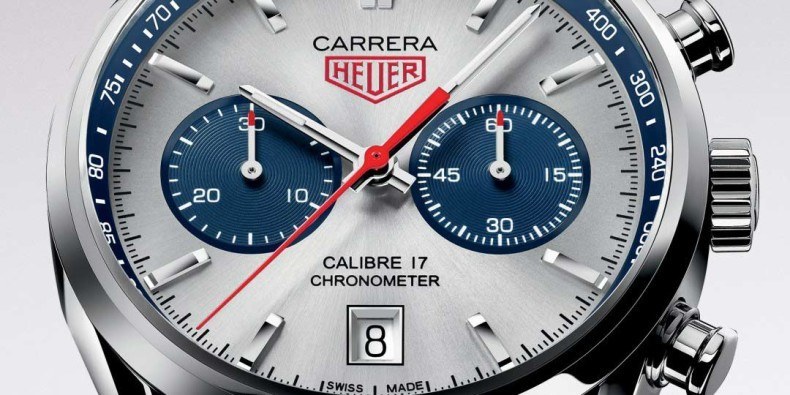
Another great name with a rich heritage to pick from is Longines. Their Heritage range must be one of the best – perhaps matched only by Tudor – and this, the Heritage 1973, is the pick of them. From the case shape to the beautiful combinations of hands, dial and tachymeter it just works. Like many retro reissues it’s slightly larger than the original (37mm to 40mm) in line with changing fashions, and there are tiny modern touches (you did spot that third sub-dial above 6 o’clock didn’t you?). All in all though, it’s as pretty as anything the company made back in the day and far cheaper in today’s market at £2,040 off the shelf.
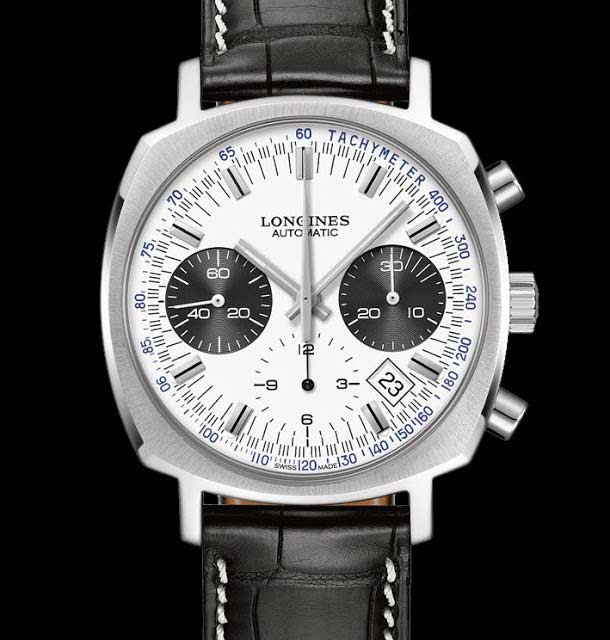
If I were to pick the reissue watch which, so far, has had the biggest impact though it would have to be the simply gorgeous Oris Divers Sixty Five. This beauty ticks all the reissue boxes but, perhaps best of all, it’s great value. You can walk out of an Oris dealer with one of these for under £1,200 which, given vintage prices, is a huge saving on any diver of compatible quality and prestige actually made in the mid 60s.
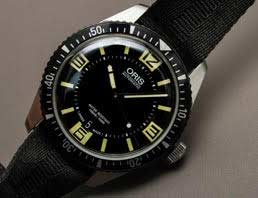
So we’ve skimmed over a few of the huge names, but let’s close by concentrating on something less well known but very special.
Some smaller watchmakers have essentially been entirely reborn by the insatiable appetite of the market for retro pieces, and of these few have been as warmly welcomed back by watchies as Vulcain.
If you know them at all it’s probably because they have supplied watches to US Presidents for decades, or because with their “Cricket” they were the first to crack the problem of a commercially viable wholly mechanical alarm wristwatch.
From its beginnings in 1858 Vulcain was all about mechanical innovation, a stance which stood it in great stead and drove it to major success until the quartz crisis bit hard in the 70s. To its credit Vulcain didn’t waver from dedication to mechanicals, but that decision finally saw it close its doors after more than a century.
It returned in 2002 with a bang. With watches now very much more luxury goods than tools, Vulcain’s pieces, with their own movements, classic design and rich heritage were a slam dunk.
This “President’s Special”, one of a huge number of variants of the Cricket, is, I think, a perfect example of being able to buy what is a classic watch with all the performance and reliability of a modern piece.
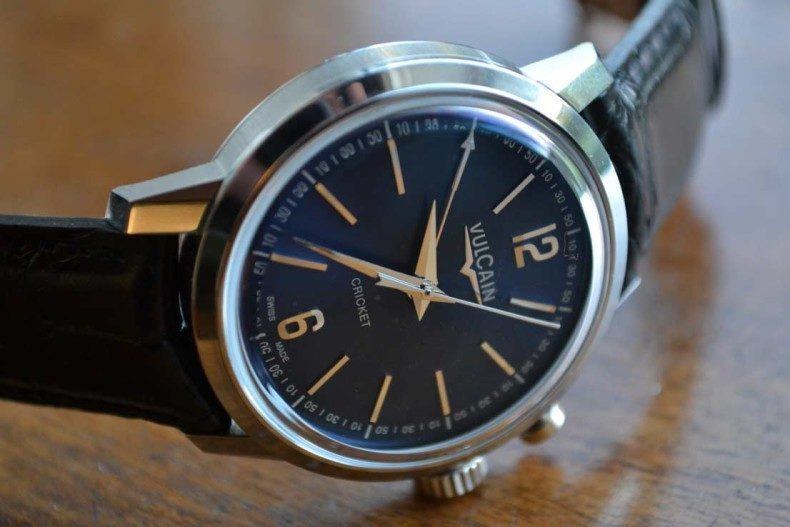
At 39mm it’s perfect for everyday modern wearing under a shirt cuff, and yet not too small for the weekend. The way the blue dial on this one contrasts with the steel case also lends itself to most occasions, and there are a myriad of other dial colour options if blue isn’t you. The very 1950s domed crystal is another nice retro touch.
Inside is Vulcan’s own Calibre V-10 manual movement, which is as attractive and well finished as you’d expect from a company whose reputation was built on movement innovation. It’s nicely visible through the case’s display back, including that unique alarm function.
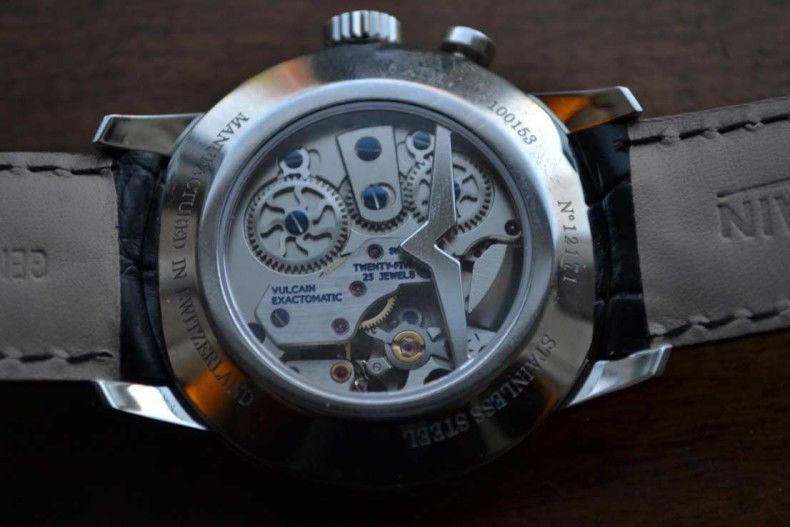
There’s no doubting the watch’s party piece though. When this one went off on a crowded train this week it was probably the only non-synthesised alarm anyone in the carriage had ever heard outside their bedroom. That lovely clear trrrriiiiiiiiiiiiiing is like nothing else and works both as a delightful celebration of the analogue and as a practical tool.
Put it this way: if your phone goes off in an important meeting you’ll be met with frowns and tuts. If one of these goes off expect to have to pass it around the table.
Here in Britain Vulcains are imported and sold by the lovely folk at Page & Cooper in London, which means the £3,550 you’d pay for this one would also get you some of the best service and aftercare in the business, for less than the price of middle ranking 1970s Omega Speedy on eBay.
We’ve only touched on what’s available across the reissue scene here, there’s lots more to explore, and best of all reissues carry no stigma at all even amongst hard-nosed collectors of originals. They’re just seen as what they are: lovely watches which offer a great alternative.
Happy days.


